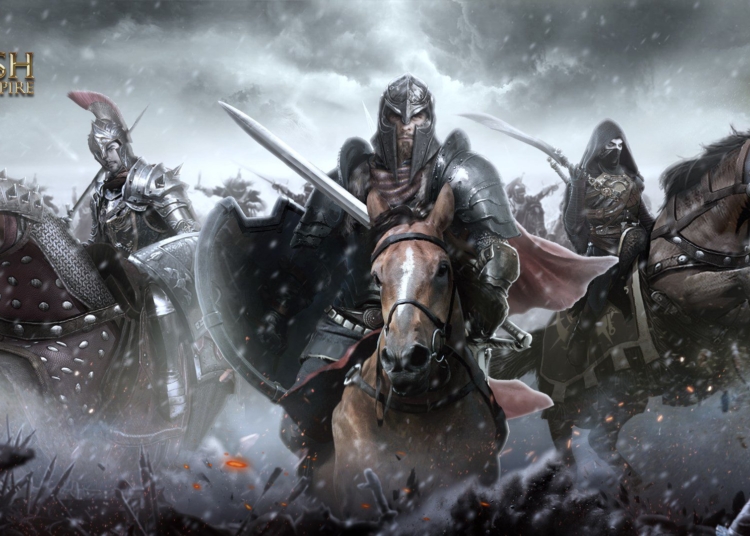The Great Persian Wars, also known as the Greco-Persian Wars, occurred between 499 BC and 449 BC. These wars were fought between the Greek city-states and the Persian Empire and had a significant impact on the development of Western civilization. The Persian Empire, led by King Darius I and later his son Xerxes I, aimed to expand its territory by conquering the Greek city-states. The Greek city-states, including Athens, Sparta, and Corinth, were fiercely independent but lacked a unified command structure. Despite being outnumbered, the Greeks displayed impressive military strategies in battles such as Marathon, Thermopylae, and Salamis. Ultimately, the Greeks emerged victorious at the Battle of Plataea, preserving their independence and shaping the course of history. The legacy of the Great Persian Wars continues to influence our understanding of ancient warfare and the resilience of empires.
The Great Persian Wars: Clash of Empires and Military Strategies
Introduction
The Great Persian Wars, also known as the Greco-Persian Wars, were a series of conflicts fought between the Greek city-states and the Persian Empire. Spanning from 499 BC to 449 BC, these wars marked a significant turning point in the ancient world and had a profound impact on the development of western civilization. The clash of empires and the tactical military strategies employed by both sides during these wars reveal the intricacies of ancient warfare and the determination of nations to assert their dominance.
The Persian Empire
The Persian Empire, led by King Darius I and later his son Xerxes I, was the dominant power of the time, stretching from present-day Iran to Egypt and Asia Minor. With a well-trained army consisting of both infantry and cavalry, the Persians aimed to expand their empire by conquering the Greek city-states and extending their influence in the region.
The Greek City-States
The Greek city-states, consisting of Athens, Sparta, Corinth, and others, were fiercely independent and jealously guarded their autonomy. They boasted a strong navy and well-organized hoplite infantry, making them formidable opponents. However, the Greek city-states were divided among themselves, often competing for dominance and lacking a unified command structure.
The Battle of Marathon
The Persian Wars can be traced back to 490 BC when King Darius I launched an invasion of Greece, landing on the plains of Marathon, just north of Athens. Despite being heavily outnumbered, the Athenians, led by General Miltiades, devised a brilliant strategy to defeat the Persians. They formed a stronger center and weaker sides, enticing the Persian army to attack the sides while the Greeks held the center. The Greek hoplites managed to repel the Persian flanks, causing panic and routing the enemy. This victory at Marathon showcased the effectiveness of Greek hoplite warfare and its potential to resist the Persian onslaught.
The Invasion of Xerxes
In 480 BC, Xerxes I, the son of Darius I, sought to avenge the Persian defeat at Marathon. With an immense army and an equally impressive navy, Xerxes led his forces into Greece with the intention of subjugating the city-states. The Greek city-states, realizing the gravity of the situation, put their differences aside and formed a united front against the Persian invasion.
The Battle of Thermopylae
The Battle of Thermopylae is one of the most famous battles of the Persian Wars. Led by King Leonidas I of Sparta, a small force of Greek hoplites held off the Persian advance at the narrow pass of Thermopylae for several days. This strategic bottleneck negated the numerical advantage of the Persian army, allowing the Greeks to defend with maximum efficiency. Although ultimately defeated due to a traitorous local resident, the Greeks showcased their resilience and ability to fight against overwhelming odds.
The Battle of Salamis
The Battle of Salamis was a naval battle fought between the Greek alliance and the Persians. The Greek general, Themistocles, formulated a plan to lure the Persian fleet into the confined waters of the Salamis strait, where the superiority of the Greek navy could be fully utilized. By using superior tactics and knowledge of the local geography, the Greeks inflicted heavy losses on the Persian fleet, effectively neutralizing their naval power in the region.
The Final Victory
The decisive battle of the Persian Wars took place at Plataea in 479 BC. Led by an alliance of Greek city-states, including Athens and Sparta, the Greeks defeated the Persian forces and ended their invasion. The victory at Plataea marked the end of the Persian threat to Greece and ensured the preservation of the Greek city-states’ independence.
Conclusion
The Great Persian Wars were significant not only for the military strategies employed but also for their lasting impact on the development of Western civilization. The relentless Persian expansionism met the resilient Greek city-states, resulting in a clash of empires that shaped the course of history. The military strategies displayed by both sides highlight the importance of coordination, intelligence, and adaptability in warfare. The courage and determination of the Greek city-states, despite their internal divisions, allowed them to resist and ultimately repel the Persian invasion. This conflict laid the foundation for the emergence of powerful Greek city-states, such as Athens, which became the cradle of democracy and philosophy. The legacy of the Great Persian Wars continues to shape our understanding of ancient warfare and the resilience of empires in the face of adversity.












